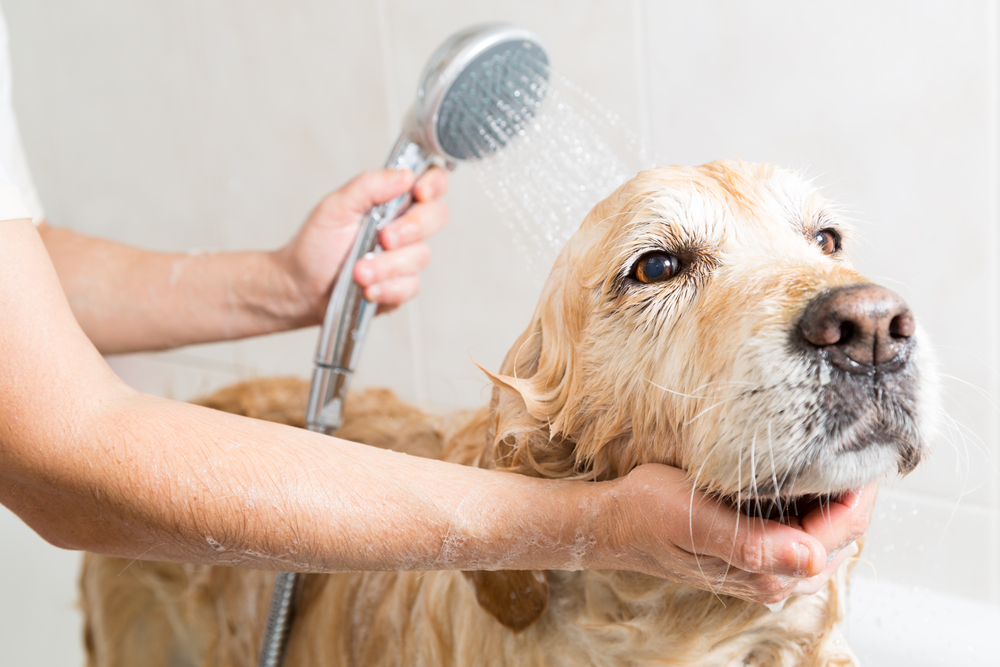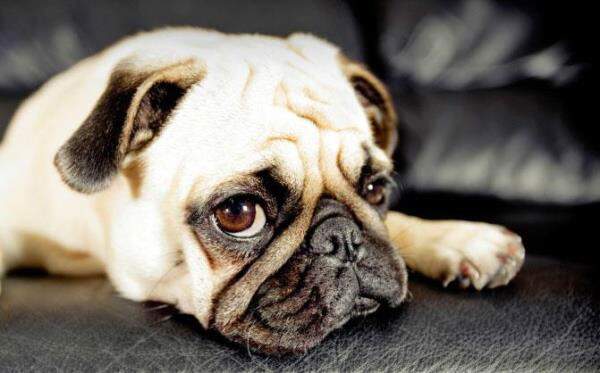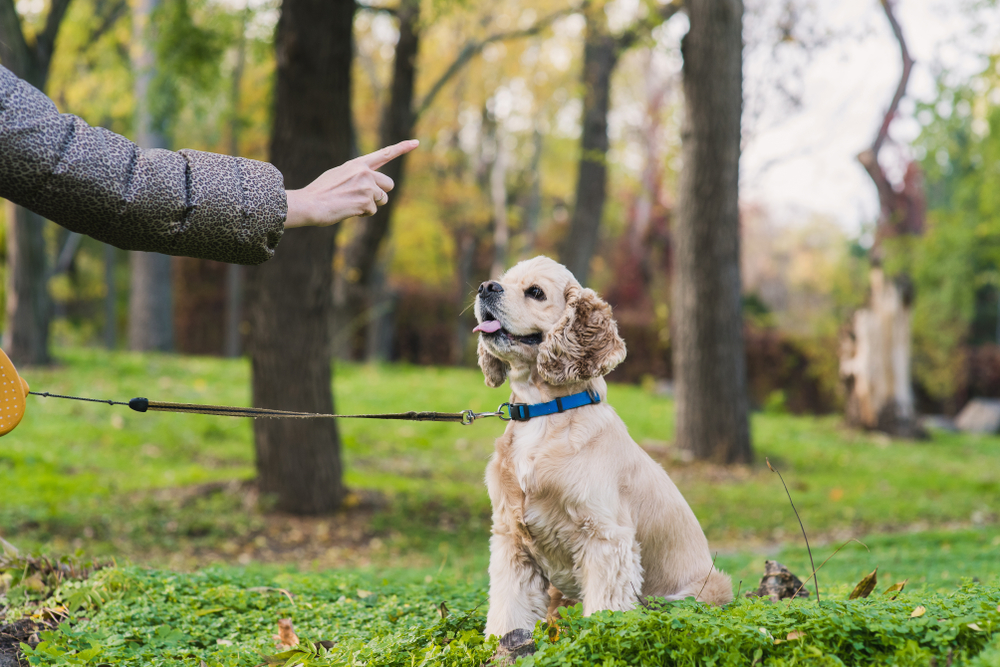How to Groom a Dog
One of the best ways to protect dogs from fleas and ticks—and the menacing illnesses they can cause—is to stay on top of grooming. Your "dog grooming 101" list should include simple tasks like brushing and bathing regularly. Keeping up with these will help you identify those tiny yet dangerous pests that can lurk in your dog's coat.
Brushing and Combing
Before you can begin the brushing process, make sure you have the right tools for the job. A slicker brush and a flea and tick comb are best for dogs with long or thick fur—you want to reach beneath your pet's top coat when brushing. Soft-bristled brushes work fine for most short-haired pets, but they aren't up to the challenge when it comes to dogs with fuller coats. Do be careful that you don't scratch your pet's skin with a slicker brush, though. Gentle, meticulous brushing always works best.
Brushing a Long-haired Dog
Where you start or finish matters much less than doing a thorough brushing job on a long-haired dog. You may begin by brushing your dog's head and ears before moving on to his chest, back, and belly. Once you have finished these areas, you can end the session by brushing the fur on his legs, rump, and tail. Pay close attention to the areas where your pet's legs meet his body; these spots are notorious for mats.
Here's how to brush your long-haired dog:
- Wherever you start, first separate a small section of your dog's fur away from the rest, creating a makeshift part in the hair.
- Next, carefully brush this section of fur against the direction of the hair's growth.
- Inspect your dog's hair and skin as you brush, keeping an eye out for fleas and ticks.
- Brush the hair back in the direction of its growth before moving to a new section of hair. This technique is called “line brushing."
- When you have finished brushing your pet, go over him again with a flea comb. If you're wondering how to flea comb your dog, it's simple. Start at your dog's head, comb in the direction of the fur, and work your way to the tail.1 Put the comb in water every few brushstrokes to remove any trapped fleas or eggs.
- Once you are done, wipe the comb on a wet paper towel. If it leaves behind red or brown stains, this is a sign of flea dirt, and your dog is likely suffering from a flea infestation.
You must brush a long-haired dog often to prevent snarls from forming. Depending on the length and thickness of his hair, daily brushing may be necessary. Frequent brushing will also bring out the natural oils in your dog's skin, making his coat shine.
Brushing a Short-haired Dog
Because short-haired dogs don't get snarls, you might assume that brushing these animals is less necessary, but nothing could be further from the truth. Pets with smooth coats are prone to all the same hair and skin problems as long-haired pets, minus the mats, of course. Redness or dry, flaky skin can signal an issue, but you may not even know these symptoms exist unless you reach for your soft-bristled brush, the tool of choice for a smooth-coated pet.
You won't be able to separate a short-haired dog's fur into sections, but it is still important to brush every inch of her coat. It can be difficult to see fleas and ticks on dark-colored animals—even short-haired ones—so be especially vigilant when working on these pets. Once again, a flea comb can come in handy for this purpose.
Bathe Your Dog with Shampoo Designed for Pups
Bathing is as important to your dog's good health as brushing. Always brush your dog before running the bathwater. Untangling mats from a pet once they have been saturated with water is nearly impossible. If you make this mistake, shaving your dog may be the only practical option for removing the knots. And remember to never use your hair care products on your pet, as they are too harsh for canine hair and skin.2
If you find any fleas or ticks while brushing your pet, use a flea killing shampoo to help take care of them, along with any eggs the fleas leave behind. Consider ADAMS Plus Flea & Tick Foaming Shampoo & Wash for Dogs & Puppies. It kills fleas, ticks, and lice and prevents flea eggs from hatching for 28 days. If your dog has sensitive skin, try the ADAMS Plus Flea & Tick Shampoo with Precor. It effectively kills flea eggs and flea larvae for 28 days, and the aloe leaves the coat soft and shiny.
When Bathing, Lather, Rinse, and Rinse Again
To keep shampoo out of your dog's eyes, use only a warm, damp cloth to clean his face. Next, wet him completely before applying shampoo to his entire body. Refer to the product's label for the proper amount of time to leave the shampoo on your pet. When it is time to rinse, bear in mind that you cannot overdo this important step. Any soap left behind in your pet's coat can cause him to itch and scratch, even once the fleas and ticks are long gone. Thorough rinsing will help keep this from happening.
Grooming Is a Great Time for Flea and Tick Prevention
Grooming time offers pet owners a vital opportunity to find fleas and ticks. Identifying a flea or tick infestation early can reduce your pet's chance of getting sick, but preventing the infestation in the first place is even better. ADAMS Plus Flea & Tick Prevention Spot On for Dogs is a great way to keep the fleas from coming back. One application will protect your dog from fleas and ticks for up to 30 days.
If a topical treatment isn't your preference, consider the ADAMS Flea and Tick Collar Plus for Dogs & Puppies. They kill fleas, ticks, flea eggs, and larvae, and they keep eggs from hatching for up to seven months.
Regular grooming is part of a good hygiene routine for your dog, and it will help you and your pup bond even more. Your pup will feel happier and cleaner, and you'll be glad you're making his well-being a top priority.
1. Schwab, Samantha. "How to Use a Flea Comb for Dogs." PetMD, 16 November 2018, https://www.petmd.com/dog/parasites/how-use-flea-comb-dogs.
2. Reisen, Jan. "Can You Use Human Shampoo on Dogs?" AKC, 12 September 2017, https://www.akc.org/expert-advice/health/human-shampoo-on-dogs/.



